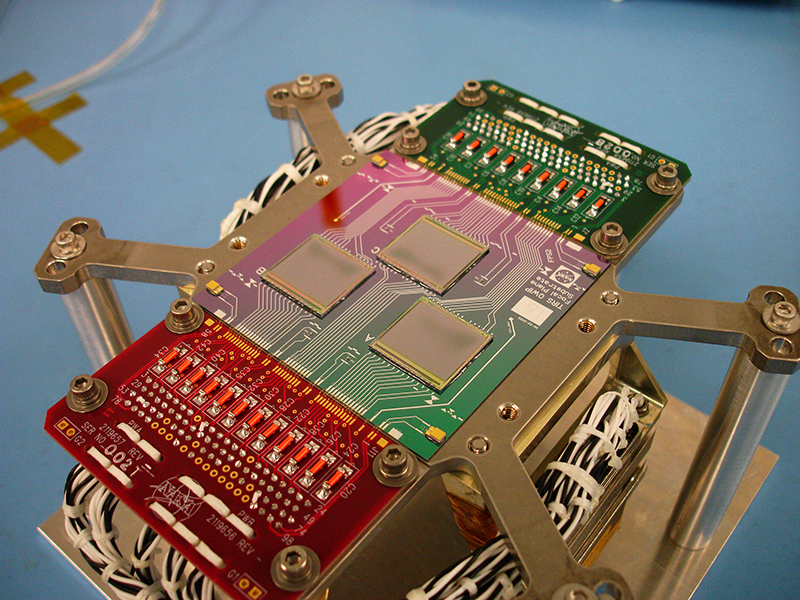Early QWIP Development Helped Landsat See Infrared

A false color image of a Goddard engineer in the far infrared (8-12 micrometer IR spectral band) taken with the 1-megapixel QWIP in 2006. Warmer temperatures are orange, cooler temperatures are dark red. Notice the thermal handprint on her lab coat as she removes her hand from her pocket. (Credit: NASA)
In 2006, a team at Goddard Space Flight Center unveiled a new, one-million-pixel Quantum Well Infrared Photodetector (QWIP) array – the world’s largest at the time – that could detect thermal infrared light over a broader range than previously possible.
A QWIP detector is a Gallium Arsenide (GaAs) semiconductor chip with over 100 layers of detector material on top. These thin layers, ranging from 10 to 700 atoms thick, act as quantum wells that trap electrons. Those electrons are released when light of a specific energy hits one of the quantum wells, and the electron flows to a readout to be recorded and used to create an image of the infrared light source.
In 2009, three slightly smaller QWIP arrays (640 x 512 pixels) of the same design were used as the focal plane array of the Thermal Infrared Sensor (TIRS) instrument onboard the Landsat 8 satellite, launched in 2013. The TIRS instrument is still operating, well beyond the planned five-year mission. Flight spares from Landsat 8 were subsequently used on Landsat 9 as well.

QWIP focal plane assembly flight hardware for the TIRS instrument on Landsat 8 (Credit: NASA)
The ability to see a range of infrared wavelengths, in this case between 8 to 12 micrometers, opened myriad potential uses for the technology, from atmospheric temperature and dust tracking to tree canopy measurements to wildfire detection. The QWIP arrays were also relatively inexpensive because they could be fabricated using standard semiconductor technology that produces silicon computer chips.
Today, Strain Layer Superlattice (SLS) detectors and uncooled microbolometers are largely replacing QWIPs. These technologies operate at warmer temperatures, have a better detection capability (higher quantum efficiency), and provide a broader spectral response.